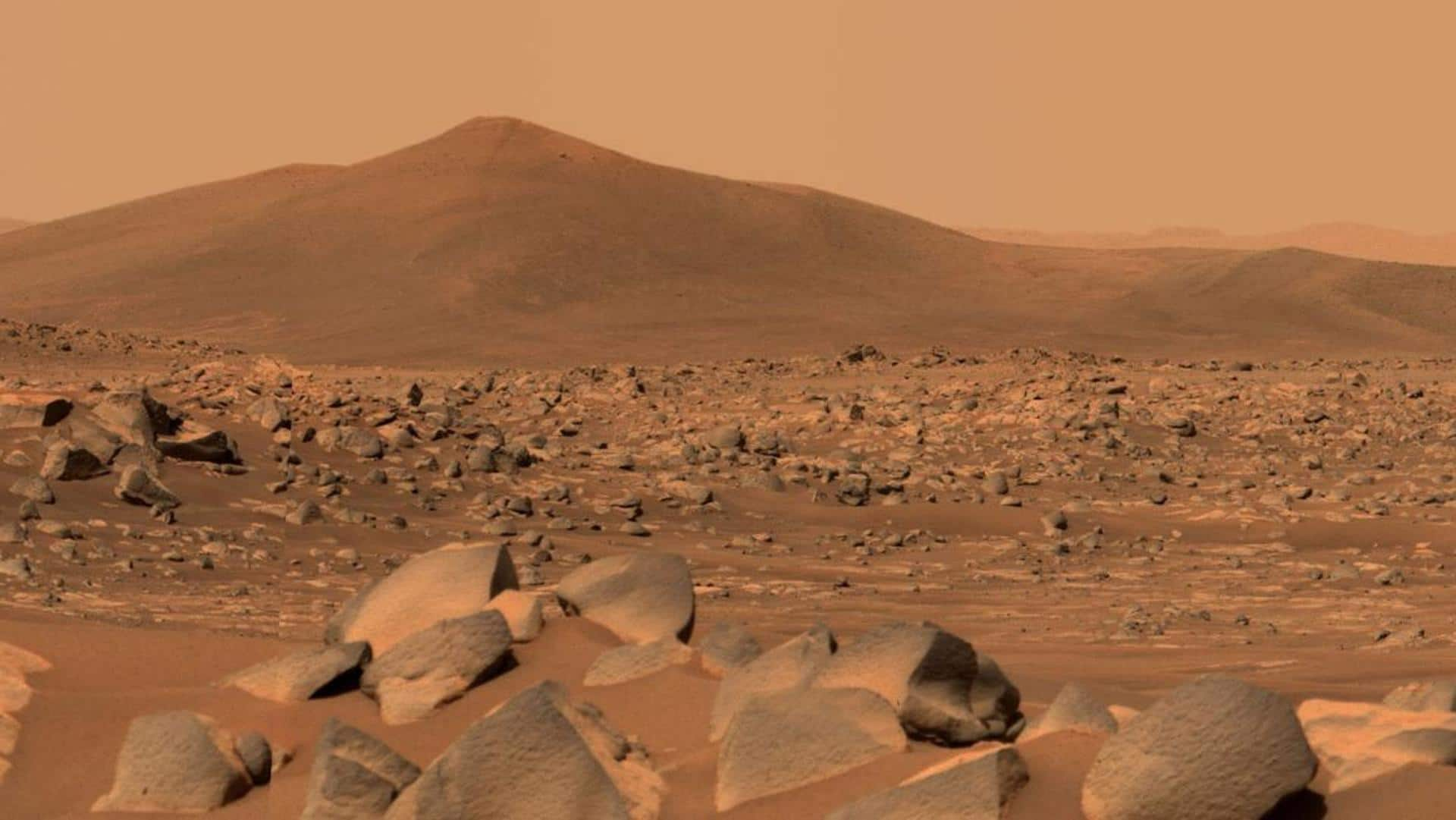
How NASA assigns names to geological features on Mars
What's the story
NASA currently has two rovers probing Mars: Curiosity and Perseverance Rover. As these robotic explorers discover more about the Red Planet, researchers would have to designate names for the locations the rovers are traveling and the geological features found on the planet, essentially mapping the planet for further investigations. But how exactly is this naming done? Let's find out.
Context
Why does this story matter?
It may be interesting to consider how geological features or locations on Mars get their names. In fact, it's not just mountains, river beds, and craters on Mars that get a label. Even smaller objects, like rocks, get a unique moniker. However, it may not be hard to guess that several of these designated names are inspired by actual locations on Earth.
Naming
NASA has explained the naming process through a video
Tina Seeger, a geologist from Caltech, has explained in a new NASA video how geological features and locations on Mars that the rovers explore get their names. Curiosity and Perseverance rovers are positioned at different craters on Mars, over 3,200km from each other. For a large part of it, the rocks in these craters get their names based on places on Earth.
Rules
Some regions on Mars get nicknames as well
Some regions on Mars get official names while certain others receive nicknames as well. For instance, the Perseverance Rover is currently probing a rock outcrop—regions where rock formation and other geological features are seen above the surface—near the border of the Belva Crater on Mars. This crater is bigger than the Jezero Crater, which was where the Perseverance Rover landed in 2021.
Information
Belva crater is named after a town in West Virginia
Belva crater on Mars is named after a town in West Virginia, which itself is named after Belva Ann Lockwood, a lawyer who was among the first women in the US to stand for president. On the other hand, Jezero means "lake" in Slavic languages.
Official words
'Small craters on Mars must be named after small towns'
"Official names get assigned by the International Astronomical Union, which has strict guidelines for features across the whole solar system," explained Seeger in the latest video. "Small craters on Mars must be named after small towns. Smaller features like rocks, cliffs, meteorites—those get nicknames chosen by the rover teams that are not official, but they do stick."
Improvements
Previously, people came up with names quite randomly
Seeger also points out that the naming has improved from how it was done in the past. "In the '90s, they came up with names on the fly, and that's why you got silly names like 'Barnacle Bill' [and] 'Indiana Jones," she said. Now, things are done differently. Researchers make a list of names, based on different themes, well ahead of time.
Nicknames
Teams operating Perseverance choose names based on national parks
Recently, the Curiosity rover collected a rock sample from a region on Mars called "Ubajara," named after a Brazilian national park. Compared to Jezero and Bela, which are official names, "Ubajara" classifies as a nickname. In short, teams operating the Perseverance Rover choose names based on national parks around the world while researchers handling the Curiosity rover pick names from South America and Scotland.
Rock samples
Perseverance recently completed building a sample depot on Mars
Earlier this year, Perseverance recorded a major milestone. It completed building a sample depot on Mars, marking the first time a sample repository has been constructed in another world. Scientists want to bring back Martian samples to Earth and this depot serves as a backup for that purpose. One of these samples is designated 'Bearwallow," named after a hiking trail in Shenandoah National Park.